Powercolor HD 7870 Myst Edition
Testing & Methodology

We’ve expanded our testing suite considerably since the X79 chipset release, and will continue to use the same methods for most of the motherboards and CPU’s we test. In the interests of thoroughness and accurate results, we run each test at least three times, and some tests more than that. We average the total of all the tests from each benchmark then report the average here.
The OS we use is Windows 7 Pro 64bit with all patches and updates applied. We also use the latest drivers available for the motherboard and any devices attached to the computer. We do not disable background tasks or tweak the OS or system in any way. We turn off drive indexing and daily defragging. We also turn off Prefetch and Superfetch. This is not an attempt to produce bigger benchmark numbers. Drive indexing and defragging can interfere with testing and produce confusing numbers. If a test were to be run while a drive was being indexed or defragged, and then the same test was later run when these processes were off, the two results would be contradictory and erroneous. As we cannot control when defragging and indexing occur precisely enough to guarantee that they won’t interfere with testing, we opt to disable the features entirely.
Prefetch tries to predict what users will load the next time they boot the machine by caching the relevant files and storing them for later use. We want to learn how the program runs without any of the files being cached, and we disable it so that each test run we do not have to clear Prefetch to get accurate numbers. Lastly we disable Superfetch. Superfetch loads often-used programs into the memory. It is one of the reasons that Windows occupies so much memory. Vista fills the memory in an attempt to predict what users will load. Having one test run with files cached, and another test run with the files un-cached would result in inaccurate numbers. Again, since we can’t control its timings so precisely, it we turn it off. Because these four features can potentially interfere with benchmarking, and and are out of our control, we disable them. We do not disable anything else.
We are revamping our testing method in order to better represent motherboard performance and offering to the consumer. Also we want to make it an easier read for you without miles of endless charts. We ask that you provide feedback in an effort to help us deliver better reviews for you.
Test Rig
| Test Rig | |
| Case | Open Air Test Bench |
| CPU | Intel Core i7-3770K |
| Motherboard | ASUS Maximus V Formula |
| Ram | 16GB Patriot Viper Xtreme 2400MHz + |
| CPU Cooler | Swiftech H20-320 Edge |
| Hard Drive | Western Digital Velociraptor 300GB |
| SSD | Intel 510 series SATA III 120GB |
| Optical | ASUS BD-ROM |
| GPU | Powercolor HD7870 MYST Edition |
| Additional Cards |
N/A |
| PSU | Thermaltake Toughpower XT 1475W |
| Mouse | Tt eSPORTS Theron gaming mouse |
| Keyboard | Tt eSPORTS Meka G1 mechanical gaming keyboard |
Test Suite
We will use the following applications to test the performance of the graphics card.
Synthetic Benchmarks & Games
| Benchmarks |
|---|
| 3DMark11 |
| Batman Arkham City |
| Sniper Elite V2 |
| Dirt 3 |
| Metro 2033 |
Overclocking

The Powercolor HD7870 MYST edition card overclocks very similarly to what I have seen from other 7000 series GPU’s from AMD. The MYST being based on a cut down Tahiti I was not sure what to expect so I loaded up the system to take some runs and see how far the GPU could go.
Upon pushing the GPU I was surprised to see the Tahiti LE overclocks much like the full 7900 series GPUs I have overclocked before as the GPU ramped up to 1230MHz and was completely stable. Anything above that and stability started to become a concern so i stopped there and moved to the memory. Memory was able to be pushed to 1650MHz (6600MHz QDR) which means there shoudl be no bottleneckl on teh memory side but I have seen teh memory go higher but taht can vary from card to card.
The overall performance you can expect from this overclock in real world apps is approximately 4-7% depending upon the application. This may not seem like much but it is enough for a few FPS.
In order to ensure no system bottleneck we clocked the CPU to 4.6GHz to ensure there is no reason the system will slow down the card’s performance at all.
Some may ask why we chose the mainstream Z77 system, and we can explain. Up until recent the X79 enthusiasts platform did not really support PCI-E Gen 3 on the Nvidia 600 series GPU’s. Because of the inherent instability many have seen with the X79 platform with Gen 3 products, Nvidia has been hesitant to enable it, and now there is a workaround via registry to get it working. However, in order to ensure the most consistent testing possible, we have stuck to the natively supported Z77 platform.
Important note: Overclocking can cause component failure. Please exercise caution when attempting any level of overclock on system components.
Temperatures

The temperatures were recorded with full loaded Heaven benchmark looping for over 30 minutes or longer depending how long it took for the card to level out in temps and sat at a plateau for more than 10 minutes.
| GPU Temperatures | Temperature (Idle/Load) |
| HD7870 MYST OC | 32C/76C |
| HD7870 MYST | 31C/75C |
The Tcooler on teh MYST edition while it may be basic does the job and keeps things nice and chilly even at an overclock of over 1200MHz core.
Real world/Gaming Benchmarks
3DMARK 11

3DMark 11 is the newest in Futuremark’s suite of benchmarking utilities. Its a fully capable DirectX11 benchmark which also stresses and analyzes the system performance as a whole to simulate a heavy rendering environment such as a high end game or other app the end user may run. This benchmark was run with Performance settings 5 times and all runs were averaged for the result below.
Here you can see that the new Tahiti LE makes for some very nice performance jumping well ahead of the 7870GHz edition and even the previous gen GTX580. This means that this card can be a very strong performer for anyone looking for a nice cool running budget card with massive gaming power.
Sniper Elite V2
Sniper Elite V2 is an interesting game based around being a highly skilled military sniper in WWII era. the graphics are quite nice and when cranked to max can be rather stressful for even a top end GPU.
Here we see that the HD7870 MYST comes in right at the top just shy of the 680, as all of teh cards tend to bunch up at the mid 60 FPS level with this game. This card should pull more than acceptable performance levels at max settings.
Metro 2033

Metro 2033 likely one of the most demanding games that we have tested with, as it brings virtually every GPU to its knees. The MYST falls behind the GTX 580 on this one aas it slots just a couple FPS above the 7870 GHz edition, but still very close to playable framerates and if details were tweaked back just slightly I think this card could even play metro at nice smooth framerates.
Batman: Arkham City
Batman is a popular game, which is why we include it. Here the MYST comes in right behind the HD7950 which is an amazing GPU and a testament to the capability of the MYST card.
Dirt 3
Dirt 3 was highly marketed by AMD, And the MYST does excellent with it as it churns out over 170 FPS once again easily beating out the GTX 580 and just on the tails of its much bigger brother the 7950 model card.
 Bjorn3D.com Bjorn3d.com – Satisfying Your Daily Tech Cravings Since 1996
Bjorn3D.com Bjorn3d.com – Satisfying Your Daily Tech Cravings Since 1996
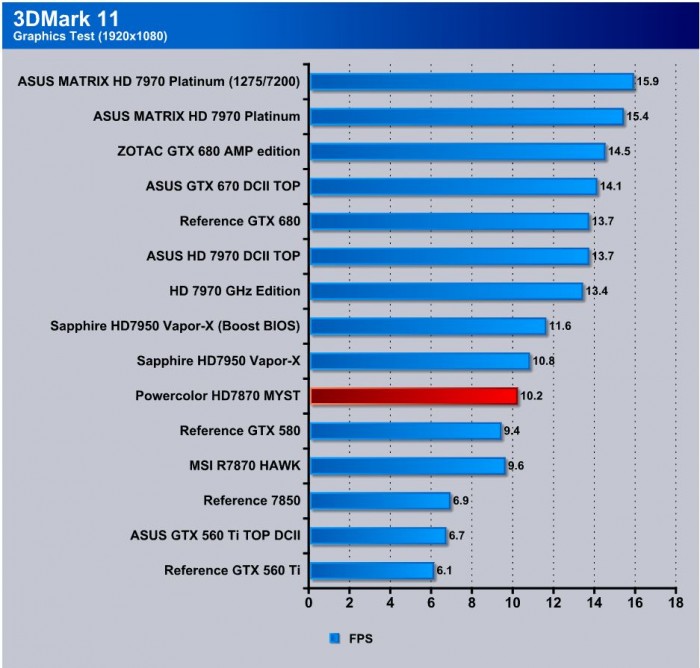
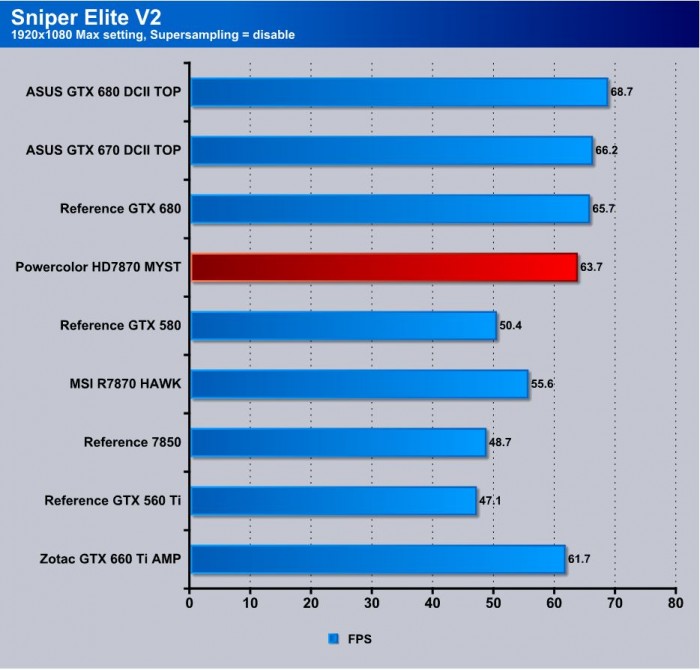
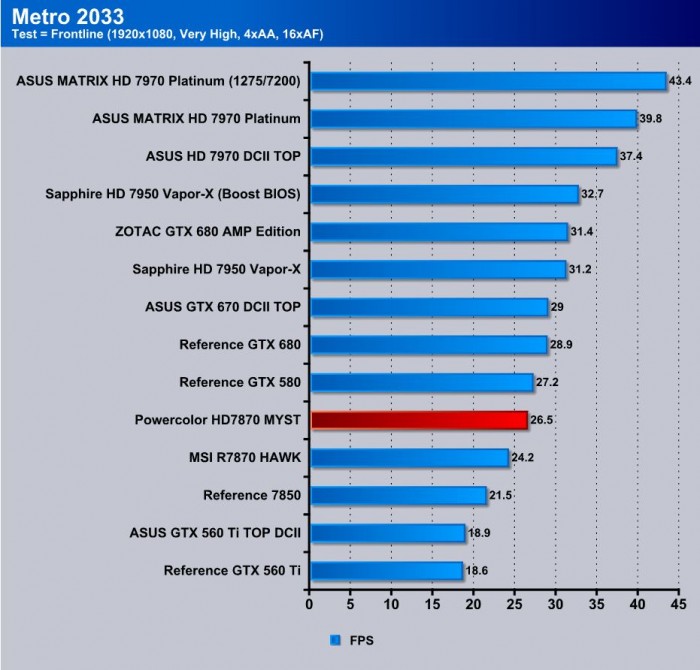
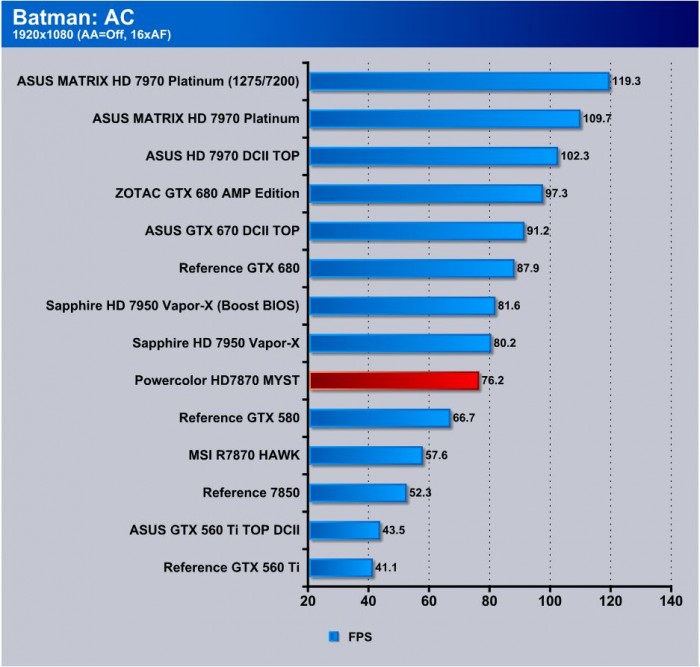
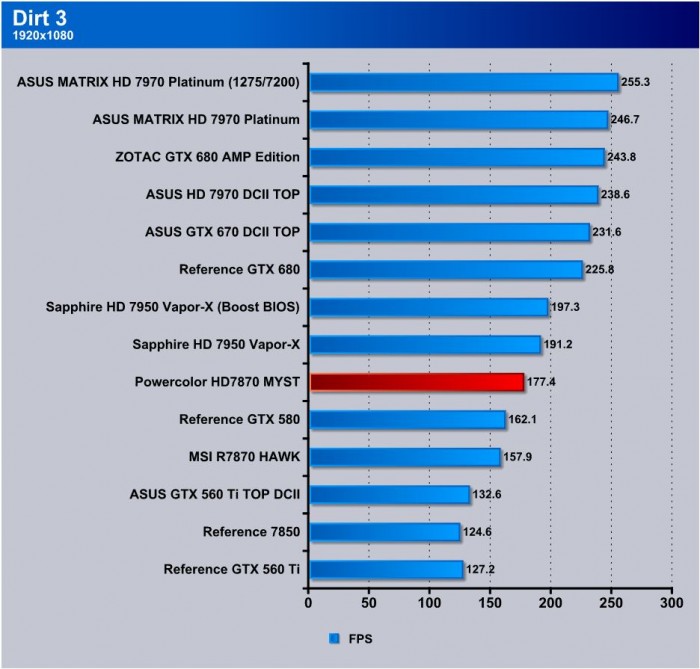








So.. where is the comparative with gtx 660 and gtx 660ti ?
why not benchmark the new crysis 3 ?
why not benchmark the latest tomb raider with all the hair effects ?
bad review !!
because there would be nothing to compare it to. it would be a review of the games, not the card
bad review of the review